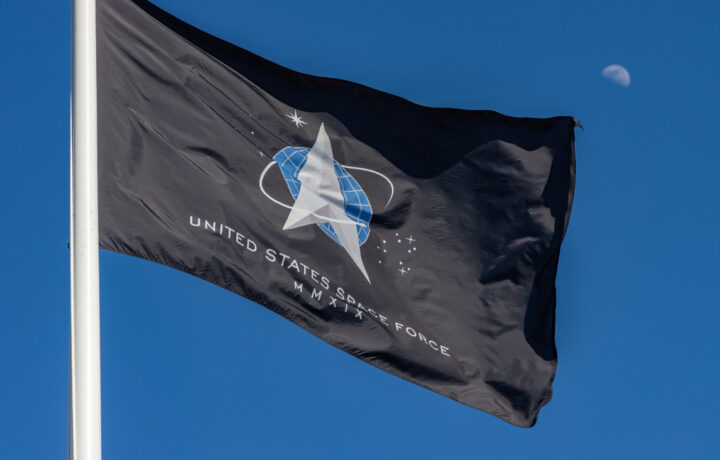In 1915, in preparation for America’s likely entry into the First World War, the United States Navy established the Navy Reserve. It came just three years after the sea service had established its Atlantic Reserve and Pacific Reserve fleets, which were each established as reserve units of operational ships that were employed on greatly reduced schedules.
Following World War II, hundreds of warships were again maintained as part of the reserve fleet.
The U.S. Space Force may soon have its own reserve – as it aims to create a commercial space reserve fleet. Earlier this month, the space service released a request for information (RFI) that called for industry insight on how it could leverage the commercial space industry’s capabilities to improve the resilience, effectiveness, and capacity within the commercial space industry.
“The Space Systems Command Commercial Space Office (SSC/COMSO) is seeking review and feedback of the Commercial Augmentation Space Reserve (CASR) Framework, Draft Readiness Plan, Draft Incentive Plan, and Draft H-Clauses,” the RFI stated.
“The CASR framework is designed to ensure that the Space Force can leverage the commercial space industry from peacetime through the spectrum of conflict to enhance the resilience, capacity, and effectiveness of its national security space architecture. CASR is being developed to be flexible and adaptable to evolving technologies, operational requirements, and commercial offerings,” the release added.
THE ROLE OF COMSO
Space Systems Command (SSC), which oversees the COMSO, was set up to assess and secure commercial services, ranging from traditional satellite communications to satellite imagery. It is responsible for most space-related commercial services for the Space Force, including intelligence, surveillance, and reconnaissance.
It was created to ensure the U.S. military will have access to commercial technologies that will help with procurement bottlenecks. To accomplish these goals, the new office has already been charged with acquiring a vast array of services from industry, including commercial satellite imagery, space situational awareness data, and more.
The office will also be in charge of determining the military efficacy of acquiring new commercial capabilities as well as their cost-effectiveness. It also includes the Commercial Satellite Communications Office (CSCO), the Space Domain Awareness Marketplace, the SSC Front Door, the partnership with AFRL and AFWERX for SpaceWERX, and the Commercial Augmented Space Reserves program (CASR), which is currently in early-stage development.
Improving the CASR Framework
It was last summer that the SSC/COMSO released its draft of the CASR, which as Executive Gov reported included nine elements, including the concept of operations and decision authority; policy, regulatory and legal conditions; contractual structures; interoperability and integration; risk mitigation; commercial partnerships; and cybersecurity.
SSC/COMSO is now calling for those from industry to offer additional insight on specifics of the CASR framework, including its structure, engagement process, implementation challenges, and phases; the incentive plan’s effectiveness and incentive types, as well as participation barriers; its readiness plan including support and resources, along with the assessment process; and contract clarity, flexibility, and risk mitigation.
Insight is also sought on its integration and implementation, including how it might integrate with existing operations, the timeline, and any feedback mechanism; while commentators should also share their thoughts on the innovation practices and lessons learned from industry, plus any confidentiality or security concerns.
The command is asking for responses to be provided by September 6, while the goal for the CASR program is to reach initial operational capability by fiscal year 2026 (FY26).




